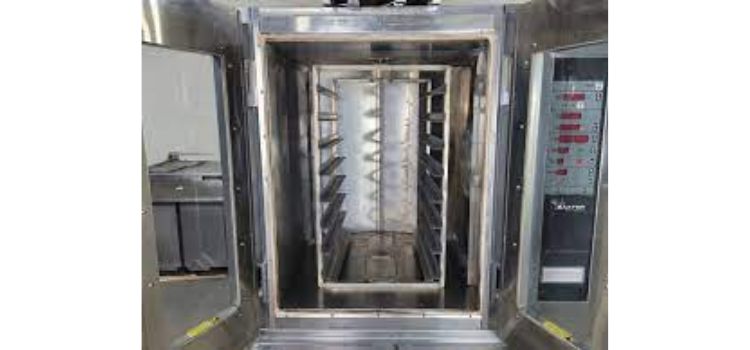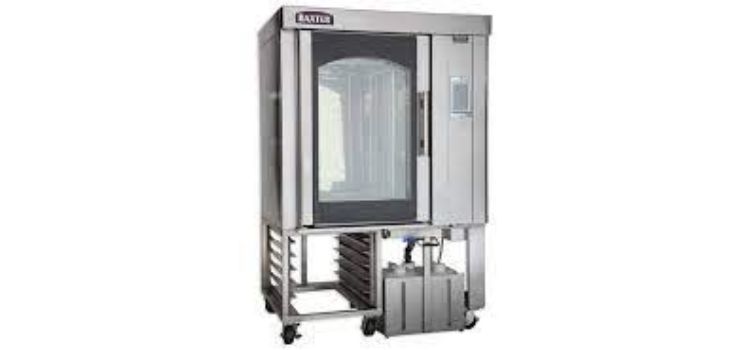As an Amazon Associate, I earn from qualifying purchases
Baxter Oven Repair is known for its reliability and high performance in commercial kitchen settings. However, like any other appliance, they may encounter issues over time that require repair. In this article, we will discuss some common problems that can occur with Baxter Ovens and provide troubleshooting tips to help you resolve them.
Baxter oven Repair are widely used in commercial kitchens for their durability and performance. However, even the most reliable ovens can experience problems over time. It’s essential to identify and troubleshoot these issues to ensure your Baxter oven operates efficiently and minimizes downtime in your kitchen operations.
Common Baxter Oven Issues

Here are some common problems you may encounter with a Baxter oven:
Oven not heating: The oven fails to reach the desired temperature or doesn’t heat up at all.
Uneven heating: The oven heats unevenly, resulting in inconsistent cooking or baking.
Oven door issues: The oven door doesn’t close properly, leading to heat loss or difficulty in accessing the oven.
Faulty controls and displays: The oven controls or displays malfunction, making it challenging to set the desired settings or monitor the cooking process.
Excessive smoke or odor: The oven emits excessive smoke or unpleasant odors during operation.
Oven not powering on: The oven fails to power on or respond to commands.
Troubleshooting and Solutions
Let’s explore some troubleshooting steps and potential solutions for these common issues:
3.1 Oven Not Heating
Check power supply: Ensure the oven is properly plugged in and that the power supply is stable. Test the outlet with another device to verify if it’s functioning correctly.
Inspect heating elements: If the oven still doesn’t heat up, the heating elements may be faulty. Examine them for signs of damage or disconnection. Replace any defective heating elements.
Thermostat calibration: Check the oven’s thermostat calibration. If it’s not accurate, adjust it according to the manufacturer’s instructions.

3.2 Uneven Heating
Positioning of pans and trays: Ensure that pans and trays are placed properly inside the oven, allowing for adequate air circulation. Avoid overcrowding the oven, as it can restrict heat flow.
Rotate and rearrange: To promote even heating, rotate the pans or trays halfway through the cooking process. If necessary, rearrange them to different oven racks for balanced heat distribution.
Calibrate oven temperature: Verify the oven’s temperature accuracy using an oven thermometer. If there are significant discrepancies, adjust the temperature settings or seek professional calibration.
3.3 Oven Door Issues
Clean the door: Ensure the oven door and its components are clean and free from debris that may obstruct proper closing. Begin by obtaining a clean cloth and dampening it with water. Ensure that the cloth is not overly saturated, but damp enough to facilitate the cleaning process.
Inspect hinges and latches: Examine the hinges and latches for any damage or misalignment. Tighten loose screws or bolts and adjust the components as needed. If hinges or latches are severely damaged, replace them.
Check gasket condition: Inspect the door gasket for wear or tears. If damaged, replace the gasket to ensure a proper seal.
3.4 Faulty Controls and Displays
Power cycle the oven: Turn off the oven and unplug it from the power source. Allow a brief pause of a few minutes to ensure any residual electrical charge dissipates. Sometimes, a simple reset can resolve control or display issues.
Check wiring connections: Inspect the wiring connections behind the control panel. Regularly inspect the item to ensure it is securely fastened or locked in its designated position. Loose or faulty connections can cause control malfunctions.
Contact the manufacturer: If the control or display issues persist, consult the manufacturer’s troubleshooting guide or contact their customer support for further assistance.
3.5 Excessive Smoke or Odor
Clean the interior: Remove any food debris or grease buildup from the oven’s interior. Use a mild cleaning solution and a non-abrasive sponge or cloth. Thoroughly rinse and dry the interior before use.
Check ventilation: Ensure the oven’s ventilation system is clear and unobstructed. Clean or replace any clogged filters or vents.
Review cooking techniques: Adjust cooking techniques to minimize smoke production, such as avoiding excessive fats or oils that can drip onto heating elements.
3.6 Oven Not Powering On
Check power supply: Ensure the oven is properly connected to a working power source. Test the outlet with another device to confirm functionality. Baxter Ovens Repair
Inspect power cord: Examine the power cord for any signs of damage or fraying. replacing a damaged cord with a compatible one is crucial to maintain the safety and reliable operation of your equipment.
Tripped circuit breaker: Check the circuit breaker or fuse box for any tripped breakers or blown fuses. Reset or replace them as necessary.
When to Seek Professional Repair

While troubleshooting can often resolve common issues, there are instances where professional repair is necessary. If you encounter complex technical issues that require in-depth knowledge or specialized tools, it is recommended to seek the expertise of a qualified technician.
- Complex electrical or wiring problems
- Gas-related issues
- Frequent recurring problems
- Any repairs involving specialized tools or technical expertise
Maintenance Tips to Prevent Issues
To minimize the occurrence of problems and ensure your Baxter oven operates optimally, follow these maintenance tips:
- Regularly clean the oven’s interior and exterior surfaces.
- Clean or replace filters and vents as recommended by the manufacturer.
- Schedule professional maintenance and inspection periodically.
- Familiarize yourself with the manufacturer’s recommendations for the appropriate usage of the equipment.
- Train staff on proper oven operation and maintenance procedures.
Conclusion
Baxter ovens are reliable appliances that can encounter issues over time. By following the troubleshooting tips provided in this article, you can effectively address common problems and ensure your oven operates smoothly. Follow all safety instructions provided by the manufacturer, including wearing appropriate personal protective equipment (PPE), using safety guards, and adhering to recommended operational procedures. With proper maintenance and care, your Baxter oven will continue to serve you well in your commercial kitchen operations.
Learn More About Verona Oven Repair
Frequently Asked Questions (FAQs)
While some basic troubleshooting can be done by users, it’s advisable to seek professional repair for complex issues. This ensures safety and prevents further damage.
Cleaning your equipment regularly ensures a hygienic environment. Clean the oven’s interior and exterior surfaces regularly, following the manufacturer’s recommendations.
It’s recommended to avoid using the oven if it’s experiencing significant issues. Continued use may exacerbate the problem or pose safety risks. Seek repair or professional guidance before using the oven again.
With proper maintenance, Baxter ovens can last for many years. The lifespan may vary depending on usage, maintenance practices, and model.
In many cases, repairing an older Baxter oven can be cost-effective compared to purchasing a new one. Consult with a professional technician to assess the condition and determine the best course of action.
In the case of Baxter oven repair, it’s important to address issues promptly to minimize downtime in your commercial kitchen operations. By troubleshooting common problems and seeking professional help when needed, you can ensure your Baxter oven continues to serve you well for years to come.
Leave a Reply